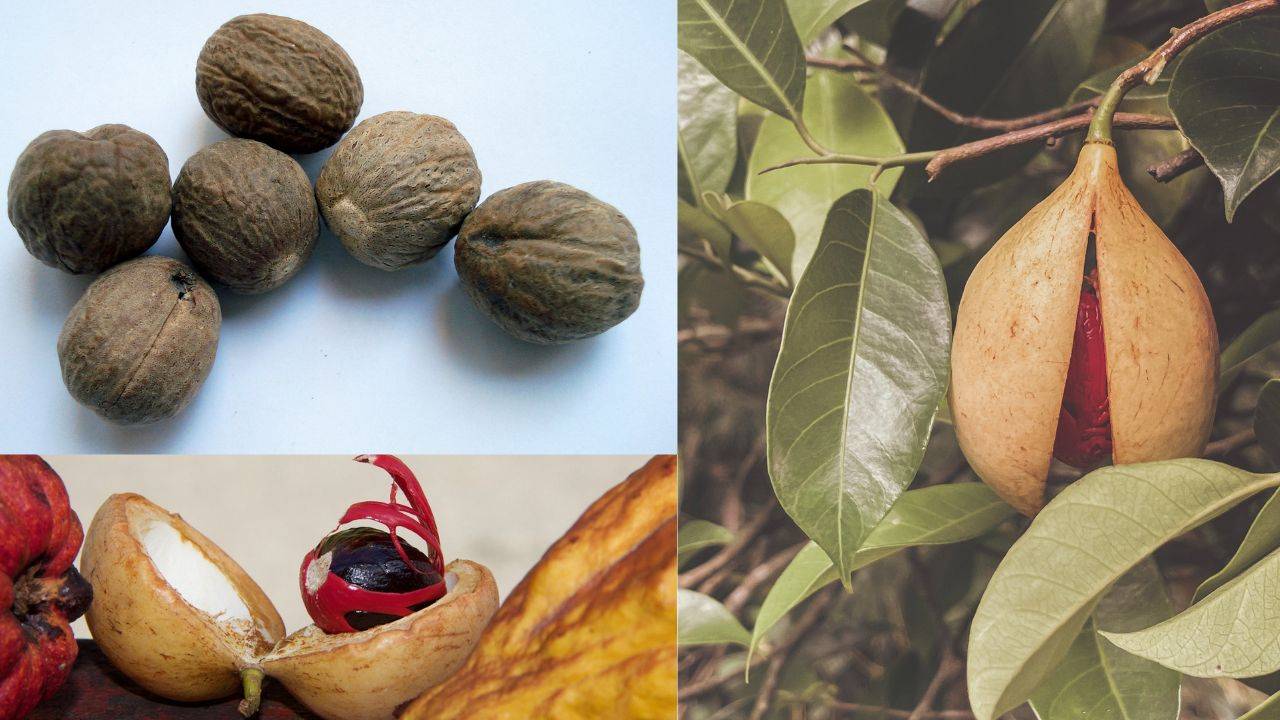
Nutmeg, with its warm and aromatic flavour, is a prized spice used in various culinary delights around the world.
India, with its diverse climate and fertile soil, provides an ideal environment for nutmeg cultivation. Whether you're a seasoned farmer or a gardening enthusiast, this comprehensive guide will walk you through the process of cultivating nutmeg in India, from selecting seeds to harvesting and processing this aromatic spice.
Choosing the Right Varieties
Before you embark on your nutmeg cultivation journey, it's essential to select the right nutmeg variety for your region.
In India, two main nutmeg varieties thrive: Myristica fragrans and Myristica malabarica. The former is the most common and commercially cultivated variety, while the latter is native to the Western Ghats and South India.
Preparing the Soil
Nutmeg trees prefer well-drained, loamy soil with good organic content. To prepare the soil:
- Perform a soil test to determine its pH and nutrient levels.
- Amend the soil with well-rotted compost or organic matter to improve fertility.
- Ensure proper drainage to prevent waterlogging, which can be detrimental to nutmeg trees.

Propagating Nutmeg Trees
Nutmeg can be propagated from seeds, cuttings, or air layering. In India, propagation from seeds is the most common method:
- Collect ripe nutmeg fruits, which are yellow when mature.
- Extract the seeds and wash away any pulp.
- Soak the seeds in water for a day to soften the outer shell.
- Plant the seeds in nursery beds or pots at a depth of about 1 inch.
- Keep the soil consistently moist but not waterlogged.
- Seedlings should emerge in 3-6 weeks.
Transplanting Seedlings
Once your nutmeg seedlings are 6-8 inches tall, they are ready for transplanting into their permanent locations:
- Choose a suitable location with partial shade or filtered sunlight.
- Space the trees 20-30 feet apart to allow for their growth.
- Dig holes that are twice the size of the root ball and incorporate organic matter.
- Gently remove the seedlings from the nursery beds and plant them in the holes.
- Water thoroughly after transplanting.
Nutmeg Tree Care
To ensure healthy nutmeg trees in your orchard, follow these care guidelines:
- Watering: Nutmeg trees require consistent moisture, especially during dry spells. Water deeply but avoid waterlogging.
- Fertilization: Apply a balanced fertilizer, rich in potassium and phosphorus, every 3-4 months to promote growth and fruit production.
- Pruning: Regular pruning helps maintain tree shape and improve air circulation. Remove dead or diseased branches.
- Mulching: Apply mulch around the base of the tree to conserve moisture and suppress weeds.
- Pest and Disease Management: Keep an eye out for common pests like mites and aphids. Use organic pest control methods to protect your trees.
Flowering and Fruit Set
Nutmeg trees typically start flowering at 3-4 years of age. The small, yellowish flowers are either male or female. Female flowers give rise to fruit, but both male and female trees are required for pollination. Bees are the primary pollinators, so maintain a diverse garden ecosystem to attract them.
Harvesting Nutmeg
Nutmeg fruit resembles a yellow apricot when ripe. The fruit contains a reddish aril known as mace, and inside the aril is the nutmeg seed. Harvesting nutmeg involves these steps:
- Wait until the fruit splits open on its own. This is a sign of maturity.
- Collect the fruits, and remove the outer aril to reveal the seed.
- Wash and sun-dry the seeds for several weeks until they rattle inside the shell.
- Carefully crack open the shell to retrieve the nutmeg seed.
- Store the seeds in a cool, dry place in an airtight container.
Spice Processing
To obtain the powdered nutmeg spice:
- Grate the nutmeg seeds using a fine grater.
- Spread the grated nutmeg on a tray and let it air dry for a few days.
- Store the dried nutmeg powder in an airtight container away from light and heat.
Challenges and Pest Control
Nutmeg cultivation in India may face challenges like fungal diseases, mites, and nutmeg weevils. It's crucial to monitor your orchard regularly and implement pest control measures promptly. Consider using organic methods to minimize chemical use and protect the environment.
Cultivating nutmeg in India can be a rewarding endeavour, both in terms of the aromatic spice it yields and the satisfaction of nurturing a thriving orchard.
By following this comprehensive guide, you can embark on a successful journey from selecting the right nutmeg variety to harvesting and processing your very own spice.
Remember that patience and care are essential in nutmeg cultivation, as it takes several years for the trees to reach full productivity. With dedication, you can enjoy the sweet aroma and rich flavour of your homegrown nutmeg in various culinary creations.

















